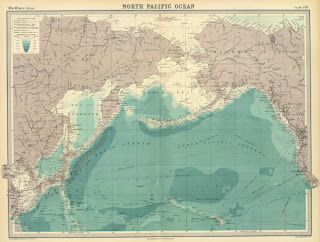Surf’s up!
I may just be a grommet,
but I’m really stoked to hang ten on plenty of gnarlatious waves. I’m totally amped to get some good air on the next feathering
curl!
In 2010, Outside Magazine named Tofino, British Columbia “the best surf town in North America.” And
they added, “Who knew?”
Well, I’m glad I’ve
found out.
Tofino is a village of about 2,000 (not counting any of the black
bears wandering through) at the tip of Esowista
Peninsula, just north of Pacific Rim National Park Reserve on the western
coast of Vancouver Island. The waves that hit local beaches come in from the
open Pacific Ocean … next landfall, Cape Lopatka on Russia’s Kamchatka Peninsula,
over 5,000 kilometres away.
This is Chesterman
Beach, and prime surfing territory:
Hahah, yes, I love going bearfoot.
If you don’t know how to surf, you can take classes:
Tofino sits at the southern end of Clayoquot Sound, one of
five sounds (or deep inlets) along
Vancouver Island’s west flank. The word “Clayoquot” comes from the name of the Tla-o-qui-aht First Nation, who are part
of the Nuu-chah-nulth Tribal Council.
People have lived around here for at least 9,000 years. The
Tla-o-qui-aht community of Opitsaht
has been inhabited without a break for over 5,000 years. This is a beautiful land
rich in natural resources – and the use of those resources has shaped Tofino’s
history.
Tofino Inlet was named after Vicente Tofiño de San Miguel. He was Spain’s chief hydrographer – a specialist in measuring
and mapping coastlines – during the 1780s. He taught the explorers Dionisio Alcalá-Galiano and Cayetano Valdés, who in turn honoured
their old teacher when they mapped some of British Columbia’s coastline in
1792.
Think about honouring your favourite teachers, too.
In those days, Europeans were interested in this area mostly
for the fur trade – especially the
trade in sea otter and seal pelts. The sea otters, with their beautiful
thick coats, were hunted almost to extinction before conservation began in the early
twentieth century.
By 1900, prospectors were exploring Clayoquot Sound for
gold, silver, and copper. Settlers built homes on the Esowista Peninsula in the
1890s, and the town of Tofino was officially established in 1909. Fishing has
always been important around Tofino, and logging was too by the 1950s.
The first road to
Tofino, though, was built only in 1959 (and it was gravel, paved only in 1972).
This road marked the official western end of the Trans Canada Highway.
Until the road opened, people came to Tofino either by boat
or by airplane. The Royal Canadian Air Force built an airbase in Tofino during the Second World War, when Canada
was worried about possible attacks by Japan. That old airbase still serves as the
airport for both Tofino and the neighbouring town of Ucluelet.
The road made it easier for more visitors to get to Tofino –
and to bring along their surfboards.
People nowadays also come to whale-watch, kayak, bird-watch,
camp, hike, beach-comb, and scuba dive. Visitors even come to watch dramatic
storms during the wintertime.
This fellow assured me that people also visit Tofino to
bear-watch:
Hmm, seems to be true! I hear that humans especially enjoy watching
us turn over rocks at low tide as we search for little crabs and other seafood.
Who knew, indeed?
In January of 2000, Clayoquot Sound was recognized by the
United Nations as a UNESCO Biosphere Reserve.
There were heated protests over logging around Clayoquot
Sound during the 1980s and 1990s. Now, people are guided by the Nuu-chah-nulth
idea Hishuk ish ts-awalk –
“everything is one.”
Tofino is home to many working artists, with lots of art
galleries, shops, restaurants, and yearly festivals.
I’d love to come back here next March for the Pacific Rim Whale Festival. Every March, some 25,000 grey
whales swim past Tofino as they travel 13,000 kilometres from the western
coast of Baja California to the Bering Sea, off Alaska. Humpback whales also migrate between March and September, while Orcas – killer whales – are around all
year.
Look, Tofino is patrolled by Canada’s national law
enforcement agency, the Royal Canadian Mounted Police:
The RCMP was formed in 1919 when the old Royal North West Mounted Police and the Dominion Police were combined. It now
has over 750 detachments like Tofino’s across Canada’s three territories, eight
of our ten provinces (Ontario and Québec have their own provincial police
forces), over 190 municipalities, and 184 First Nations communities.
This officer is almost as good-looking as Constable Benton Fraser. And you know, Dudley Do-Right was very nice to bears.
Don’t let me get started about Constable John Constable,
or handsome Sergeant Bruce!
Say, do you like surf
music? Classic surfing tunes were written by groups like The Beach Boys,
Jan and Dean, and The Surfaris.
Now you know, too, that it’s not only the surfing that draws people to the ocean near Tofino. The area’s
tremendous fishing is also music to my
fuzzy round ears; stay tuned.
Story © S. Clouthier
Photos © S. Clouthier and D. Wei
Map of Vancouver Island courtesy Demis / Wikipedia
Map of North Pacific courtesy David Rumsey Historical Map Collection
Mountie carving courtesy Folkart Interiors
Rose-Marie clip courtesy Restless Rusalka
Dudley Do-Right clip courtesy bullwinklecanada




























No comments:
Post a Comment